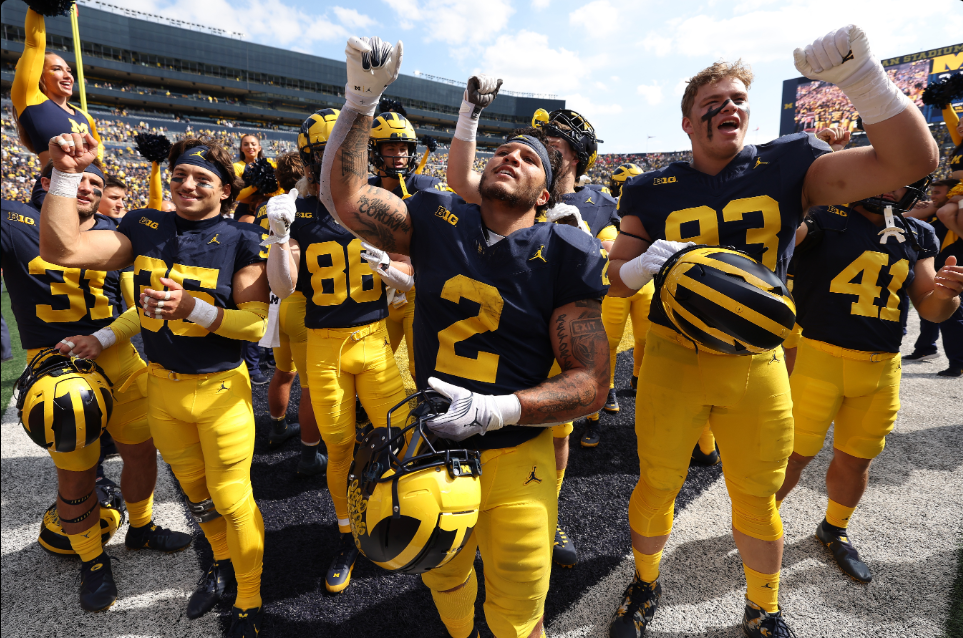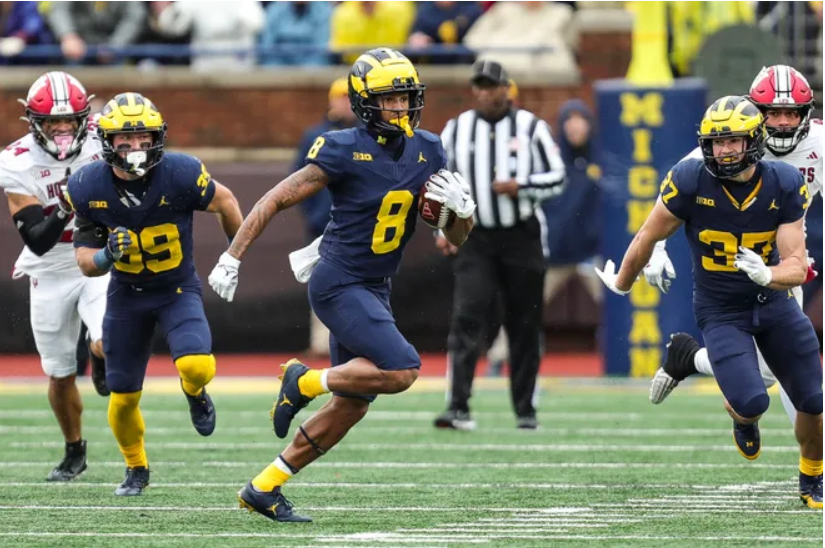

Entering the 2024 season, Michigan football faces more uncertainty on the offensive side of the ball than it has in the past decade. The Wolverines are grappling with the challenge of replacing key players who have left significant marks on the program. The task of filling these gaps falls to first-year head coach Sherrone Moore, who is tasked with addressing several critical departures.
Among the notable exits are quarterback J.J. McCarthy, who holds the record for the most wins in Michigan’s history; Blake Corum, the program’s most decorated running back; and the entire starting offensive line, which earned numerous accolades for its dominant play over the last three years. The offensive line’s departure alone represents a major adjustment, as it was a cornerstone of the team’s success.
In addition to these crucial losses, Michigan also finds itself needing to replace its top two wide receivers from the previous season. Seniors Roman Wilson and Cornelius Johnson were instrumental in the Wolverines’ passing game, finishing first and second on the team in catches, and first and third in receiving yards. Their combined contributions amounted to 95 receptions, 1,393 yards, and 13 touchdowns, with Wilson alone accounting for 12 of those touchdowns—the highest total by a Michigan wide receiver since Mario Manningham in 2007.
Replacing these standout performers is no small feat. Historically, the Wolverines have struggled to replicate such high levels of production from their wide receivers after losing top pass catchers. For instance, in 2015, Jehu Chesson and Amara Darboh were the leading receivers, but their output declined significantly when they departed, leading to a drop in performance from the receiving corps in subsequent seasons. This history highlights the difficulty of stepping up to the role of a primary wide receiver at Michigan.
Offensive coordinator Kirk Campbell has expressed clear expectations for who should take on the role of leading the receiving group. He has pointed to Tyler Morris as a key player who must step up. Morris, a 5-foot-11, 185-pound wideout, finished last season with 13 receptions for 149 yards and one touchdown, ranking seventh on the team in these categories. Despite his relatively modest statistics, Morris demonstrated promise toward the end of the season, accumulating half of his yardage in the final months and scoring his first career touchdown in the Rose Bowl against Alabama.
Morris recognizes the importance of his role and has spoken about the need to embrace leadership both on and off the field. In April, he acknowledged the responsibility of stepping up as one of the more experienced players in the wide receiver room. Morris is committed to challenging his teammates and contributing to the team’s success, emphasizing the need for all receivers to rise to their new roles and perform at their best.
If Morris does not emerge as the primary wideout, another candidate likely to make an impact is Semaj Morgan. Morgan, standing 5-foot-10 and weighing 183 pounds, showed significant potential as a freshman. In limited action last season, he recorded 22 receptions for 204 yards and two touchdowns, and added 67 rushing yards with two additional touchdowns. His explosive playmaking ability was evident, including a notable 87-yard punt return in the Big Ten Championship game.
Morris has taken on a mentorship role with Morgan, pushing him to expand his game beyond quick passes and contribute more significantly. Morris’s guidance underscores the collaborative effort among the wide receivers to improve and fulfill their roles effectively. Morgan’s ability to make big plays and his development under Morris’s mentorship could prove crucial for the Wolverines’ offense.
Another promising receiver is Fred Moore, a rising sophomore who stands 6-foot-1 and weighs 180 pounds. Moore had a limited role last season, with four catches for 32 yards. However, his size and playmaking potential could make him a key asset in the receiving corps. Moore’s impressive 48-yard catch-and-run during the spring game demonstrated his ability to contribute significantly. Morris has described Moore as a “fast and twitchy athlete” with the potential to break out and make a substantial impact.
Moore and Morgan have worked closely together, critiquing each other’s performances and striving to improve. Their shared commitment to enhancing their skills and their strong work ethic could make them a dynamic duo for the Wolverines.
Amid these transitions, one consistent and reliable presence for Michigan is tight end Colston Loveland. Loveland, who was the team’s third-leading receiver last season with 45 catches, 645 yards, and four touchdowns, is regarded as one of the top tight ends in college football. His experience and proven ability as a pass-catcher provide a valuable asset for the Wolverines as they navigate the changes in their receiving corps.
Despite Loveland’s presence, the Wolverines will need Morris, Morgan, and Moore to step up and fill the gaps left by Wilson and Johnson. Morris has expressed his readiness to take on various roles, whether it’s targeting the slot, playing on the outside, or contributing in blocking schemes. His versatility and willingness to do whatever is necessary for the team highlight his commitment to the program’s success.
As Michigan prepares for the 2024 season, the development and performance of its new wide receivers will be critical. The Wolverines must effectively replace their departed stars and integrate new playmakers into their offensive scheme. The ability of Morris, Morgan, and Moore to rise to the challenge will be pivotal in shaping Michigan’s offensive success and determining how well the team performs this season.

Leave a Reply